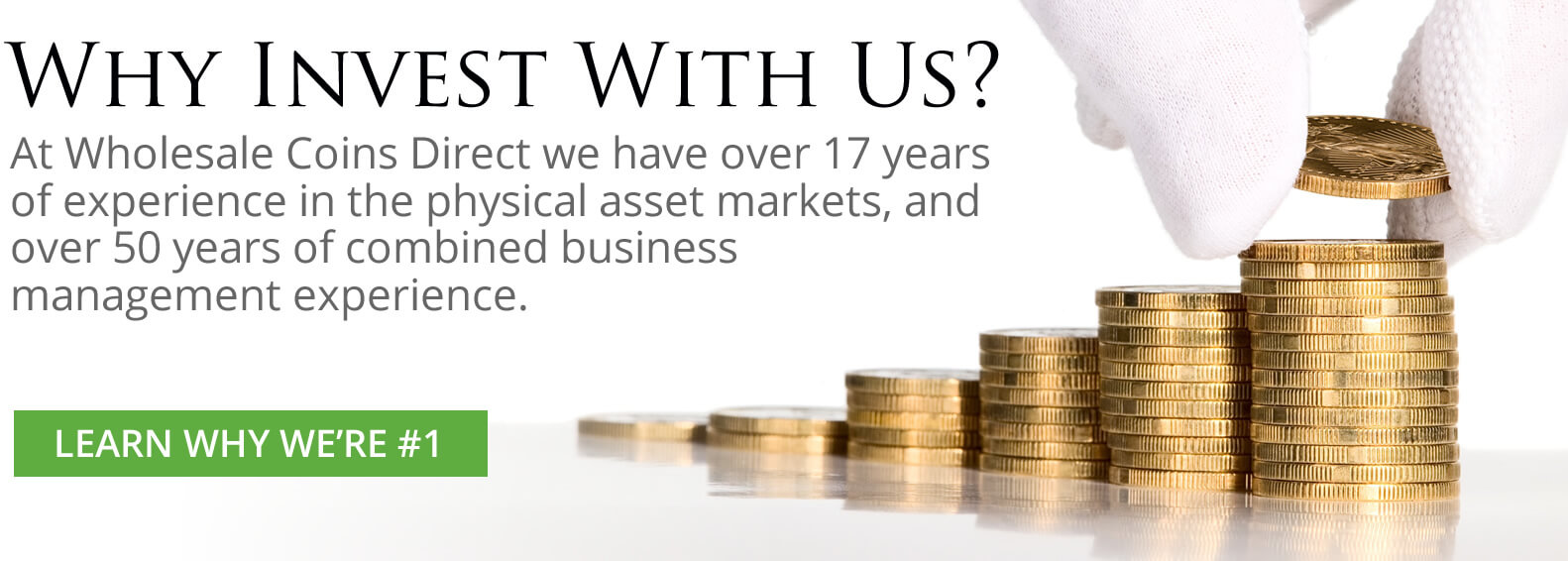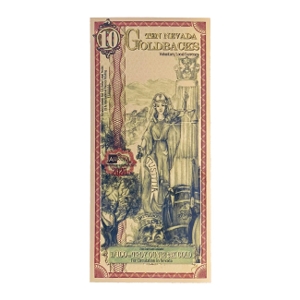
What Is A Burnished Coin? | Understand The Burnished Coin Finish
Have you ever stumbled upon a coin whose luster seemed different, yet you couldn't pinpoint why? You're not alone.
Today we're taking a look at the alluring burnished coin. We'll unveil its unique charm and history, and we'll talk about its potential significance within your collection.
The Basics of Coin Minting Processes
Making coins is a fascinating process that combines art and science. It starts with designing the coin, which involves creativity and precision. The design is then used to create a master die, which is like a stamp used to make the coins.
There are two main ways to make coins: casting and striking. Casting involves pouring molten metal into molds. This method has been used for thousands of years.
Striking, on the other hand, is more common today. It involves pressing metal disks between two dies under high pressure. This method creates coins with detailed designs and smooth finishes.
Coins can have different finishes, which affect how they look. Proof coins are made with special care. They are struck multiple times with polished dies to create a shiny background and frosted design.
Uncirculated coins are also made with new dies, but they are struck only once and not handled, keeping them in mint condition. Special finishes include burnished coins and others that have unique treatments to enhance their appearance.
What Is a Burnished Coin?
When we talk about a burnished coin, we're diving into a specific and fascinating aspect of coin collecting. Burnished coins hold a unique place in the hearts of collectors due to their distinctive appearance and the special process used to create them.
Unlike regular coins that you might find in your pocket change, burnished coins are made with a special treatment that gives them a matte or softly glowing finish.
A burnished coin starts as a blank piece of metal that is specially treated to create a smooth, matte finish. This finish is achieved through a process where the metal blanks are gently polished before they are struck by the coin press.
This polishing does not make the coins shiny like a mirror but gives them a subdued and elegant sheen. The term "burnished" refers to this process of polishing the coin blanks, which is a key step that differentiates these coins from their counterparts.
Historical Context
The technique of burnishing coins is not new. It has been used for centuries as a way to enhance the appearance of coins, making them stand out from ordinary circulation coins.
Historically, burnished coins were often used for special occasions or as commemorative pieces, valued both for their beauty and their significance in marking important events or milestones.
The Process of Creating a Burnished Coin
The journey of a burnished coin from a blank piece of metal to a finished product involves several steps. First, the metal blanks, also known as planchets, are carefully selected and polished.
This polishing process is what gives the coins their unique, matte-like finish. After polishing, the blanks are then struck with a coin press. However, unlike regular striking, the process for burnished coins often involves using lower pressure or multiple strikes to ensure that the delicate finish is not damaged.
The result is a coin that has a distinctive, soft glow that sets it apart from more common finishes like proof or uncirculated coins. Creating a burnished coin requires attention to detail and a gentle touch, making these coins not just currency, but works of art.
Comparison With Other Coin Finishes
To truly appreciate the beauty of burnished coins, it helps to understand how they compare to other finishes. Proof coins, for example, are made using specially prepared dies and blanks to create a highly detailed and mirrored surface.
Uncirculated coins, on the other hand, are minted in a standard way but have never been used in transactions, preserving their newness. Burnished coins, with their distinctive matte finish, offer a different kind of beauty.
They are less about shine and more about showcasing the coin's design in a subtle, refined way.
How to Identify a Burnished Coin in Your Collection
Identifying a burnished coin involves looking for its unique characteristics. The matte finish is the most obvious sign, but there are other indicators.
Many burnished coins come with a certificate of authenticity or are marked with a special mint mark, indicating their burnished status. These coins are often released in limited quantities and can be part of special sets or commemorations.
Recognizing a burnished coin requires a keen eye for detail and an appreciation for the nuances of coin finishes.
Understanding the characteristics of burnished coins enhances the collecting experience. These coins are valued not just for their rarity or the precious metals they may contain but for the craftsmanship and care that go into creating their distinctive appearance.
The Appeal of Burnished Coins to Collectors
Burnished coins have a special allure that captures the attention of many coin collectors. What makes these coins stand out is not just their unique finish but also their rarity and the stories they carry.
For collectors, each burnished coin is a treasure, offering a blend of beauty, history, and craftsmanship.
One of the main reasons burnished coins are so sought after is their rarity. These coins are not produced in large quantities, making them less common and more desirable to collectors.
The process used to create burnished coins is more labor-intensive and involves extra steps compared to regular coin minting. This not only limits the number of coins made but also adds to their uniqueness.
Collectors value the distinctiveness of each coin, knowing that the piece they own is one of a relatively small number.
Specific Examples of Popular Burnished Coins Among Collectors
There are several burnished coins that have gained popularity among collectors. For example, the American Silver Eagle and the American Gold Eagle both have burnished versions that are highly prized.
These coins are known for their stunning designs and the exceptional quality of their finish. Collecting these coins is not just about owning a piece of precious metal; it's also about appreciating the artistry and effort that went into creating them.
The Role of Burnished Coins in a Diversified Coin Collection
Including burnished coins in a collection can significantly enhance its diversity and value. These coins add depth to a collection, showcasing a range of minting techniques and finishes.
For collectors, having burnished coins alongside proof and uncirculated coins allows for a more comprehensive representation of the numismatic spectrum. It reflects a collector's understanding and appreciation of the finer aspects of coin collecting.
The appeal of burnished coins lies in their beauty, rarity, and the meticulous process behind their creation. For coin collectors, acquiring burnished coins is not just about adding to their collection; it's about embracing the diversity and richness of the numismatic world.
Burnished Coins and Precious Metals
Burnished coins are not only admired for their unique appearance but also for their connection to precious metals. These coins often feature metals like gold, silver, and platinum, which adds to their allure and value.
Understanding this relationship between burnished coins and precious metals can offer collectors insights into both the numismatic and investment aspects of their hobby.
Most burnished coins are made from precious metals, enhancing their appeal to collectors and investors alike. The matte finish of a burnished coin showcases the natural beauty of the metal without the glare of a polished surface.
This subtle elegance highlights the coin's design and craftsmanship, making the precious metal's qualities even more pronounced.
For many collectors, the combination of a burnished finish with a precious metal content is a compelling reason to add these coins to their collection. And the potential of precious metal investing only adds to the appeal.
How Burnishing Enhances the Value of Coins Made From Precious Metals
The burnishing process can add value to coins made from precious metals in several ways. First, it creates a distinct aesthetic that appeals to collectors looking for unique items.
Second, because burnished coins are typically produced in limited quantities, their scarcity can increase their value over time. The meticulous process used to create each burnished coin also means that they are often of higher quality and better preserved than their non-burnished counterparts, further enhancing their appeal and potential value.
The Impact of Metal Prices
The value of burnished coins is also influenced by the market prices of the precious metals they contain. As the prices of silver, gold, and platinum fluctuate, so too does the intrinsic value of these coins.
For collectors and investors, this adds an interesting dynamic to collecting burnished coins. Not only do they need to consider the numismatic value of their coins, but they must also keep an eye on precious metal markets to understand their collection's full investment potential.
The relationship between burnished coins and precious metals is a key aspect of their appeal. These coins offer a unique way to appreciate the intrinsic beauty of precious metals, enhanced by the special burnishing process.
For collectors, understanding this relationship is essential, as it influences both the aesthetic and monetary value of their collections. Whether viewed as pieces of art or as investments, burnished coins made from precious metals hold a special place in the world of coin collecting.
Investing in Burnished Coins
Investing in burnished coins can be a rewarding part of a coin collection, offering both aesthetic pleasure and financial potential. These coins, with their unique finishes and limited production, hold a special appeal for those looking to diversify their investment portfolio with tangible assets.
Understanding the nuances of investing in burnished coins can help collectors make informed decisions.
When considering adding burnished coins to an investment portfolio, it's important to research and understand the market. Factors such as rarity, demand, and the condition of the coin play significant roles in its value.
Collectors should also consider the historical significance of the coin and its potential for appreciation. Due to their limited production, burnished coins can sometimes offer a higher potential for value increase compared to more common issues.
However, as with any investment, there is no guarantee of profit, and values can fluctuate based on market conditions.
Potential for Appreciation in Value
The potential for appreciation in value is a key attraction for investing in burnished coins. Their unique characteristics and limited availability can make them highly sought after by collectors and investors alike.
As the demand for these coins increases, so too can their market value. Keeping an eye on market trends and numismatic news can help investors identify opportunities for acquiring coins that may appreciate in value over time.
Tips for Storing and Maintaining Them
Proper storage and maintenance are crucial for preserving the condition and value of burnished coins. You should store your coins in a cool, dry place away from direct sunlight and extreme temperatures.
Using acid-free holders or capsules can protect the coins from damage and environmental factors. Regularly inspecting the collection for signs of wear or damage can help maintain the coins' condition.
For investors, the condition of the coin is often directly linked to its value, making proper care an essential aspect of coin investment.
Investing in burnished coins can add a valuable and enjoyable element to a coin collection. With their unique appeal and potential for appreciation, these coins offer an interesting investment opportunity.
By carefully considering their choices, researching the market, and maintaining the condition of their coins, collectors and investors can potentially see significant returns on their investments in the world of numismatics.


Burnished Coin Collecting
In the fascinating world of coin collecting, the burnished coin stands out for its unique matte finish, rarity, and the craftsmanship behind its creation.
It embodies a blend of history, artistry, and value, making it a prized possession for collectors. Burnished coins truly enrich the tapestry of numismatics with their distinct charm.
At U.S. Gold Bureau, we've provided both new and seasoned investors with more than $2 billion in precious metals since 2003. Get our free precious metals investor guide today!









